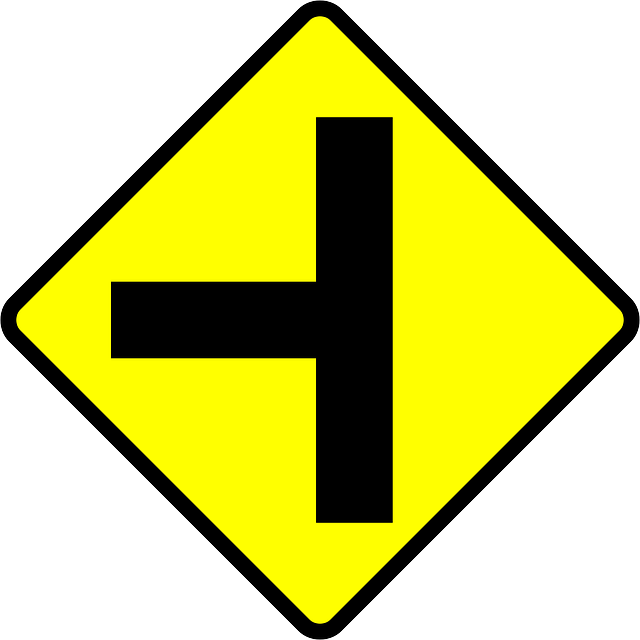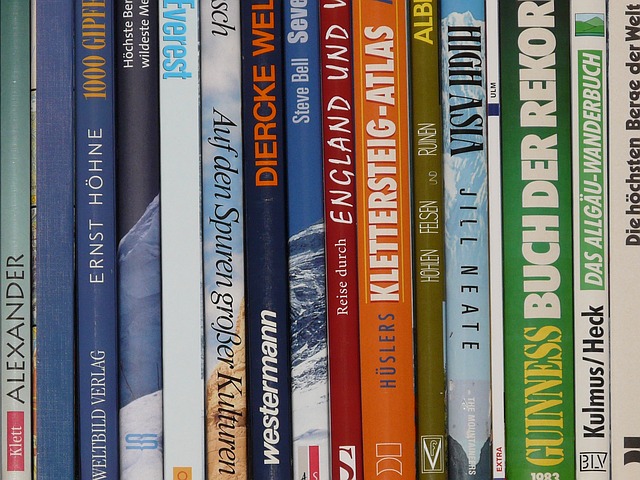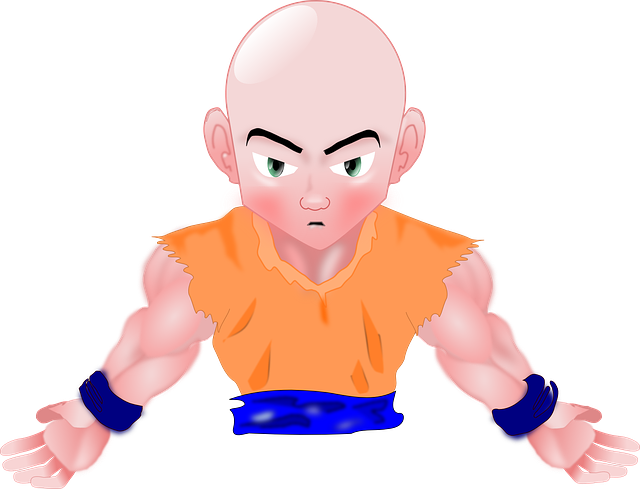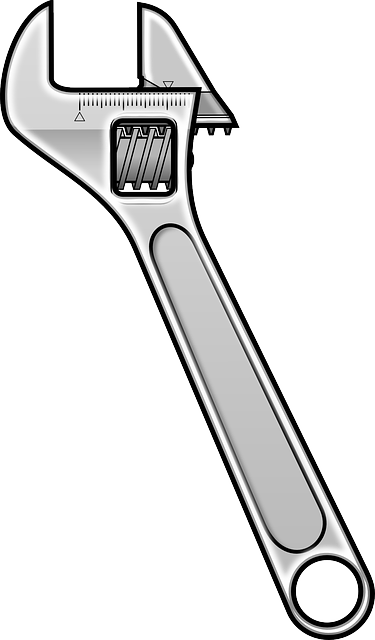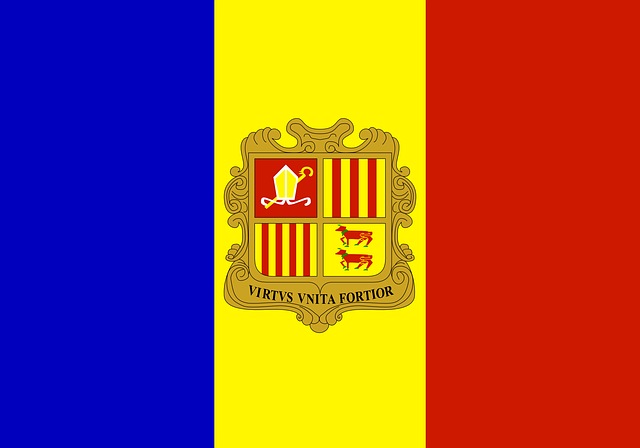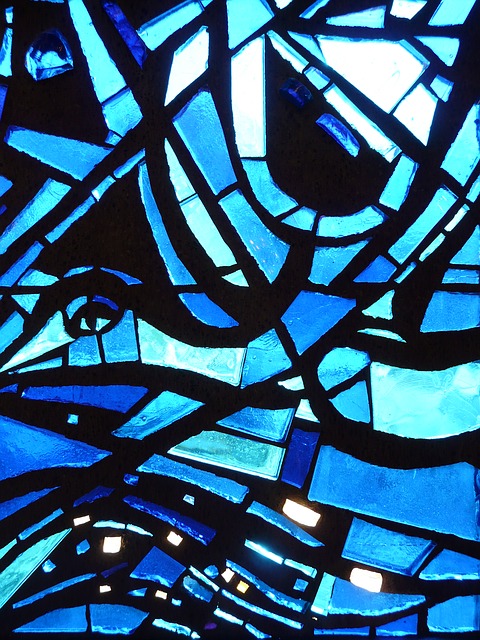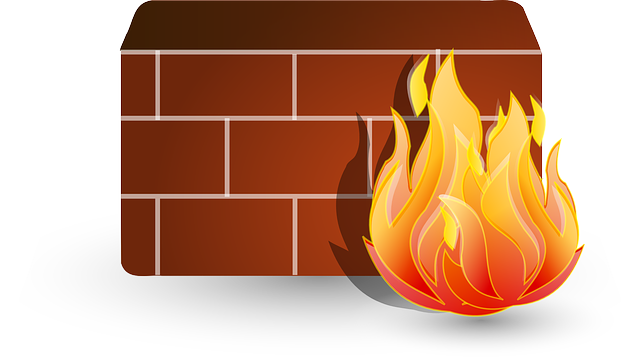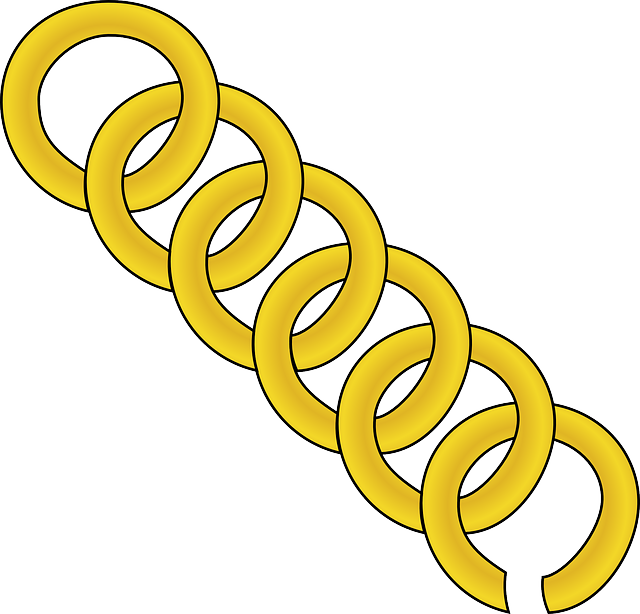تحويل جيب التمام المتبتر
يعبر تحويل جيب التمام المتبتر discrete cosine transformation (DCT) عن تسلسل محدود من نقاط البيانات من حيث مجموع وظائف جيب التمام المتذبذبة عند ترددات مختلفة. DCT ، التي اقترحها أولاً ناصر أحمد عام 1972 ، هي تقنية تحويل مستخدمة على نطاق واسع في معالجة الإشارة وضغط البيانات. يتم استخدامها في معظم الوسائط الرقمية ، بما في ذلك الصور الرقمية (مثل JPEG وHEIF ، حيث يمكن التخلص من المكونات الصغيرة عالية التردد) ، الڤيديوالرقمي (مثل MPEG وH.26x) ، الصوت الرقمي (مثل Dolby Digital ، MP3 و AAC ) ، تلفزيون رقمي (مثل SDTV ، HDTV و VOD) ، راديورقمي (مثل AAC + وDAB +) وترميز الكلام (مثل AAC-LD و Siren و Opus). تعتبر DCTs مهمة أيضًا للعديد من التطبيقات الأخرى في العلوم والهندسة ، مثل معالجة الإشارات الرقمية وأجهزة الاتصالات وتقليل استخدام عرض النطاق الترددي للشبكة والطرق الطيفية للحل العددي لـ المعادلات التفاضلية الجزئية.
تحويل جيب التمام المتبتر discrete cosine transformation تحويل رياضي له عدة إستخدامات في التقنيات الرقمية وخاصة في ميدان معالجة الإشارة الرقمية. من أشهر تطبيقات هذا التحويل خوارزميات ضغط JEPEG وMPEG وMP3.
يعد استخدام جيب التمام بدلاً من توابع الجيب أمرًا بالغ الأهمية للضغط ، حيث اتضح (كما هومشروح أدناه) حتى هناك حاجة إلى عدد أقل من وظائف التمام لتقريب إشارة نموذجية ، في حين المعادلات التفاضلية تجيب جيب التمام عن اختيار معين لـ شروط الحدود. على وجه الخصوص ، فإن DCT هي التحويل المتعلق بـ فورييه تشبه تحويل فورييه المتبتر (DFT) ، ولكن باستخدام الرقم الحقيقي فقط. ترتبط DCTs عمومًا بمعاملات سلسلة فورييه لتسلسل ممتد دوريًا ومتماثلًا ، في حين ترتبط DFTs بمعامل سلسلة فورييه لسلسلة ممتدة دوريًا. DCTs تعادل DFTs تقريبًا ضعف الطول ، وتعمل على بيانات حقيقية مع تناظر الزوجية (بما حتى تحويل فورييه لتابع حقيقي وزوجي هوحقيقي وزوجي) ، بينما في بعض المتغيرات المدخلات و/ أوبيانات الإخراج يتم إزالتها بمقدار نصف عينة. هناك ثمانية متغيرات قياسية من DCT ، أربعة منها شائعة.
النوع الأكثر شيوعًا لتحويل جيب التمام المتبتر هوالنوع الثاني من DCT ، والذي غالبًا ما يطلق عليه ببساطة "DCT". كان هذا هوDCT الأصلي كما اقترحه أحمد لأول مرة. غالبًا ما يطلق على عكسها ، النوع الثالث من DCT ، ببساطة "عكس DCT" أو"IDCT". هناك تحويلان مرتبطان هما تحويل الجيب المتبتر (DST) ، وهوما يعادل DFT للوظائف الحقيقية و"الفردية" ، وتحويل جيب التمام المتبتر المعدل (MDCT) ، والذي يعتمد على DCT للبيانات "المتداخلة". تم تطوير DCTs متعددة الأبعاد (MD DCTs) لتوسيع مفهوم DCT على إشارات MD. هناك الكثير من الخوارزميات لحساب MD DCT. تم تطوير مجموعة متنوعة من الخوارزميات السريعة لتقليل التعقيد الحسابي لتطبيق DCT. أحد هذه هوالعدد السليم DCT (IntDCT) ، عدد سليم تقريب لـ DCT القياسي, مستخدم في الكثير من المعايير الدولية ISO / IEC وITU-T.
ضغط DCT ، المعروف أيضًا باسم ضغط الكتلة ، يضغط البيانات في مجموعات من كتل DCT متبترة. يمكن حتى تحتوي كتل DCT على عدد من الأحجام ، بما في ذلك 8x8 پكسل لـ DCT القياسية ، وأحجام DCT السليمة المتنوعة بين أربعة × أربعة و32 × 32 پكسل. DCT لديه خاصية قوية "لضغط الطاقة", وقادرة على تحقيق جودة عالية في نسب ضغط عالية للبيانات. ومع ذلك ، يمكن حتى تظهر الصنعيات الانضغاطية ممتلئة عند تطبيق ضغط DCT ثقيل.
تاريخ
تم تصميم تحويل جيب التمام المتبتر (DCT) لأول مرة بواسطة ناصر أحمد ، أثناء العمل في جامعة ولاية كانساس ، واقترح المفهوم على مؤسسة العلوم الوطنية في عام 1972. كان يقصد في الأصل DCT لـ ضغط الصور. طور أحمد خوارزمية DCT عملية مع طالب الدكتوراه تي. ناتارجان وصديقه ك. ر. راوفي جامعة تكساس في أرلنگتون في عام 1973 ، ووجدوا أنها كانت الخوارزمية الأكثر فعالية لضغط الصورة. وقد قدموا نتائجهم في ورقة يناير 1974 ، بعنوان "تحويل جيب التمام المتبتر".وصفت ما يسمى الآن من النوع الثاني DCT (DCT-II), وكذلك DCT معكوس من النوع الثالث (IDCT). It was a benchmark publication, وقد تم الاستشهاد به كتطور أساسي في آلاف الأعمال منذ نشره. تم تلخيص الأعمال والأحداث البحثية الأساسية التي أدت إلى تطوير DCT في منشور لاحق من قبل أحمد ، "كيف أكون مع تحويل جيب التمام المتبتر".
منذ تقديمه في عام 1974 ، كان هناك درس كبير على DCT. في عام 1977 ، نشر ون سيونگ تشن ورقة مع سي هاريسون سميث وستانلي سي فراليك تقدم خوارزمية DCT سريعة ، وأسس مختبرات ضغط لترويج تقنية DCT. وتضم التطورات الأخرى ورقة 1978 من م.جي. ناراسيما وأ.م. پيترسن ، وورقة عام 1984 بقلم بي جي. لي. أشادت مجموعة خبراء التصوير الفوتوغرافي بهذه الأوراق البحثية ، إلى جانب ورقة أحمد الأصلية لعام 1974 وورقة تشن 1977 ، كأساس لخوارزمية ضغط الصور ذات فقد JPEG في عام 1992.
في عام 1975 ، قام جون أ. رويس وگونر س. روبنسن بتكييف DCT لـ تعويض الحركة بين الإطارات ترميز الصوت والصورة. لقد جربوا DCT وتحويل فورييه السريع (FFT) ، حيث قاموا بتطوير أجهزة ترميز هجينة بين الإطارات لكليهما ، ووجدوا حتى DCT هي الأكثر كفاءة نظرًا لتعقيدها المنخفض ، وقادرة على ضغط بيانات الصورة حتى 0.25 - بت لكل پكسل لمشهد فيديوتليفوني بجودة صورة مماثلة لمبرمج داخل الإطار يحتاج 2 بت لكل پكسل. تم تطبيق DCT على ترميز الصوت والصورة بواسطة ون-سيونگ تشن, الذي طور خوارزمية DCT سريعة مع سي.ه. سمث وس.سي فرالك في 1977,وأُسست Compression Labs لترويج تقنية DCT. في عام 1979 ، قام آنيل ك. جين وجسوات ر. جين أيضًا بتطوير ضغط الصوت والصورة DCT المعوض عن الحركة, يسمى أيضًا تعويض حركة الكتلة. أدى ذلك إلى قيام تشن بتطوير خوارزمية ضغط فيديوعملية ، تسمى DCT المعوضة بالحركة أوتشفير المشهد التكيفي ، في عام 1981.أصبح DCT المعوض عن الحركة لاحقًا تقنية الترميز القياسية لضغط الصوت والصورة من أواخر الثمانينيات فصاعدًا.
يتم استخدام DCT السليم في ترميز الصوت والصورة المتقدم (AVC), تم تقديمه عام 2003 ، وترميز فيديوعالي الكفاءة (HEVC), تم تقديمه في عام 2013. يستخدم DCT السليم أيضًا في تنسيق الصورة عالي الكفاءة (HEIF) ، والذي يستخدم مجموعة فرعية من تنسيق ترميز الصوت والصورة HEVC لتشفير الصور الثابتة.
تم تطوير DCT متغير ، تحويل جيب التمام المتبتر المعدل (MDCT) ، من قبل جون پي. پرنسن ، أ.و. جونسون وألان برادلي في جامعة ساري عام 1987, بعد العمل السابق ال1ي قام به پرنسن وبرادلي عام 1986 يتم استخدام MDCT في معظم تنسيقات الضغط الصوتي ، مثل Dolby رقمي (AC-3),MP3 (التي تستخدم DCT الهجينة - خوارزمية FFT),ترميز صوتي متقدم (AAC), وVorbis (Ogg).
تم اشتقاق تحويل الجيب المتبتر (DST) من DCT ، عن طريق استبدال شرط نيومان عند x = 0 بـ شرط ديرخليه.تم وصف DST في ورقة DCT 1974 بواسطة أحمد وناتراجان وراو. تم وصف نوع DST من النوع الأول (DST-I) لاحقًا بواسطة أنيل ك. جين في عام 1976 ، ثم نوع DST من النوع الثاني (DST-II) وصفها HB Kekra and جي.ك. سولانكا عام 1978.
طور ناصر أحمد أيضًا خوارزمية DCT بدون فقد مع گريدار مانديم ونيراج ماگوترا في جامعة نيومكسيكوفي عام 1995. ويسمح هذا باستخدام تقنية DCT لـ ضغط بدون فقد للصور. إنه تعديل لخوارزمية DCT الأصلية ، ويتضمن عناصر DCT معكوسة وتعديل دلتا. إنها خوارزمية انضغاط أكثر فاعلية من ترميز الأنتروبي. تُعهد DCT بدون فقدان أيضًا باسم LDCT.
بدأ ترميز Wavelet باستخدام تحويلات المويجات في ضغط الصور بعد تطوير تشفير DCT. أدى إدخال DCT إلى تطوير تشفير المويجات ، وهونوع مختلف من تشفير DCT يستخدم الموجات بدلاً من الخوارزمية المستندة إلى كتلة DCT.تحويل المويجات المنفصلة (DWT) يستخدم التشفير في معيار JPEG 2000, تم تطويره من 1997 إلى 2000. يعد ترميز Wavelet أكثر كثافة في المعالج ، ولم يشهد بعد انتشارًا واسعًا في الاستخدام الذي يقابل المستهلك.
تطبيقات
DCT هي تقنية التحويل الأكثر استخدامًا في معالجة الإشارة, وإلى حد بعيد التحول الخطي الأكثر استخدامًا في ضغط البيانات. كان ضغط البيانات DCT أمرًا أساسيًا في الثورة الرقمية. كانت الوسائط الرقمية غير المضغوطة بالإضافة إلى الضغط دون فقد بشكل غير عملي و ذاكرة و عرض النطاق الترددي كبيرين، والتي تم تقليلها بشكل كبير من خلال DCT ذات الكفاءة العالية بتقنية الضغط ذوالفقد, قادر على تحقيق نسبة ضغط البيانات من 8: 1 إلى 14: 1 لجودة قريبة من الاستوديو, حتى 100: 1 للمحتوى ذي الجودة المقبولة.أدى الاعتماد الواسع لمعايير ضغط DCT إلى ظهور وانتشار تقنيات الوسائط الرقمية ، مثل الصور الرقمية ، الرسومات الرقمية,الصوت والصورة الرقمي,البث الإعلامي,تلفزيون رقمي بث مباشر فيديوعند الطلب (VOD),السينما الرقمية,فيديوعالي الدقة (HD video), والتلفزيون عالي الدقة (HDTV).
غالبًا ما يتم استخدام DCT ، وعلى وجه الخصوص DCT-II ، في معالجة الإشارات والصور ، خاصة للضغط ذوالفقد ، لأنه يتميز بخاصية "ضغط طاقة" قوية: في التطبيقات النموذجية ، تميل معظم معلومات الإشارة إلى الهجريز في عدد قليل من مكونات التردد المنخفض من DCT. بالنسبة إلى عملية ماركوڤ المرتبطة ارتباطًا وثيقًا ، يمكن لـ DCT الاقتراب من كفاءة الضغط لـ تحويل كارونن-لوڤ (وهوالأمثل من حيث علاقة الديكور). كما هومشروح أدناه ، ينبع هذا من شروط الحدود الضمنية في وظائف جيب التمام.
تستخدم DCTs أيضًا على نطاق واسع في حل المعادلات التفاضلية الجزئية عن طريق الأساليب الطيفية ، حيث تتوافق المتغيرات المتنوعة لـ DCT مع شروط الحدود الزوجية / الفردية المتنوعة قليلاً عند طرفي المصفوفة.
ترتبط DCTs أيضًا ارتباطًا وثيقًا بـ كثيرات الحدود تشيبيشيڤ ، ويتم استخدام خوارزميات DCT السريعة (أدناه) في تقريب تشيبيشيڤ من الوظائف العشوائية من خلال سلسلة من كثيرات الحدود تشيبيشيڤ، على سبيل المثال في تربيع كلنشو-كرتس.
DCT هومعيار الترميز لـ أجهزة الاتصالات الوسائط المتعددة. ويستخدم على نطاق واسع لتقليل معدل البت وتقليل الاستخدام عرض النطاق الترددي للشبكة. يقلل ضغط DCT من مقدار الذاكرة وعرض النطاق المطلوب لـ الإشارات الرقمية بشكل ملحوظ.
General applications
The DCT is widely used in many applications, which include the following.
DCT visual media standards
The DCT-II, also known as simply the DCT, is the most important image compression technique.[بحاجة لمصدر] It is used in image compression standards such as JPEG, and video compression standards such as H.26x, MJPEG, MPEG, DV, Theora and Daala. There, the two-dimensional DCT-II of '"`UNIQ--postMath-00000001-QINU`"' blocks are computed and the results are quantized and entropy coded. In this case, '"`UNIQ--postMath-00000002-QINU`"' is typicallyثمانية and the DCT-II formula is applied to each row and column of the block. The result is anثمانية ×ثمانية transform coefficient array in which the '"`UNIQ--postMath-00000003-QINU`"' element (top-left) is the DC (zero-frequency) component and entries with increasing vertical and horizontal index values represent higher vertical and horizontal spatial frequencies.
Advanced Video Coding (AVC) uses the integer DCT (IntDCT), an integer approximation of the DCT. It uses 4x4 and 8x8 integer DCT blocks. High Efficiency Video Coding (HEVC) and the High Efficiency Image Format (HEIC) use varied integer DCT block sizes between 4x4 and 32x32 pixels. اعتبارا من 2019[تحديث], AVC is by far the most commonly used format for the recording, compression and distribution of video content, used by 91% of video developers, followed by HEVC which is used by 43% of developers.
Image formats
| Image compression standard | Year | Common applications |
|---|---|---|
| JPEG | 1992 | The most widely used image compression standard and digital image format, |
| JPEG XR | 2009 | Open XML Paper Specification |
| WebP | 2010 | A graphic format that supports the lossy compression of digital images. Developed by Google. |
| High Efficiency Image Format (HEIF) | 2013 | Image file format based on HEVC compression. It improves compression over JPEG, and supports animation with much more efficient compression than the animated GIF format. |
| BPG | 2014 | Based on HEVC compression |
Video formats
| Video coding standard | Year | Common applications |
|---|---|---|
| H.261 | 1988 | First of a family of video coding standards. Used primarily in older video conferencing and video telephone products. |
| Motion JPEG (MJPEG) | 1992 | QuickTime, video editing, non-linear editing, digital cameras |
| MPEG-1 Video | 1993 | Digital video distribution on CD or via the World Wide Web. |
| MPEG-2 Video (H.262) | 1995 | Storage and handling of digital images in broadcast applications, digital television, HDTV, cable, satellite, high-speed Internet, DVD video distribution |
| DV | 1995 | Camcorders, digital cassettes |
| H.263 (MPEG-4 Part 2) | 1996 | Video telephony over public switched telephone network (PSTN), H.320, Integrated Services Digital Network (ISDN) |
| Advanced Video Coding (AVC / H.264 / MPEG-4) | 2003 | Most common HD video recording/compression/distribution format, streaming Internet video, YouTube, Blu-ray Discs, HDTV broadcasts, web browsers, streaming television, mobile devices, consumer devices, Netflix,video telephony, Facetime |
| Theora | 2004 | Internet video, web browsers |
| VC-1 | 2006 | Windows media, Blu-ray Discs |
| Apple ProRes | 2007 | Professional video production. |
| WebM Video | 2010 | A multimedia open source format developed by Google intended to be used with HTML5. |
| High Efficiency Video Coding (HEVC / H.265) | 2013 | The emerging successor to the H.264/MPEG-4 AVC standard, having substantially improved compression capability. |
| Daala | 2013 |
MDCT audio standards
General audio
| Audio compression standard | Year | Common applications |
|---|---|---|
| Dolby Digital (AC-3) | 1991 | Cinema, digital cinema, DVD, Blu-ray, streaming media, video games |
| Adaptive Transform Acoustic Coding (ATRAC) | 1992 | MiniDisc |
| MPEG Layer III (MP3) | 1993 | Digital audio distribution, MP3 players, portable media players, streaming media |
| Perceptual audio coder (PAC) | 1996 | Digital audio radio service (DARS) |
| Advanced Audio Coding (AAC / MP4 Audio) | 1997 | Digital audio distribution, portable media players, streaming media, game consoles, mobile devices, iOS, iTunes, Android, BlackBerry |
| High-Efficiency Advanced Audio Coding (AAC+) | 1997 | Digital radio, digital audio broadcasting (DAB+),Digital Radio Mondiale (DRM) |
| Cook Codec | 1998 | RealAudio |
| Windows Media Audio (WMA) | 1999 | Windows Media |
| Vorbis | 2000 | Digital audio distribution, radio stations, streaming media, video games, Spotify, Wikipedia |
| High-Definition Coding (HDC) | 2002 | Digital radio, HD Radio |
| Dynamic Resolution Adaptation (DRA) | 2008 | China national audio standard, China Multimedia Mobile Broadcasting, DVB-H |
| Dolby AC-4 | 2017 | ATSC 3.0, ultra-high-definition television (UHD TV) |
| MPEG-H 3D Audio |
Speech coding
| Speech coding standard | Year | Common applications |
|---|---|---|
| AAC-LD (LD-MDCT) | 1999 | Mobile telephony, voice-over-IP (VoIP), iOS, FaceTime |
| Siren | 1999 | VoIP, wideband audio, G.722.1 |
| G.722.1 | 1999 | VoIP, wideband audio, G.722 |
| G.729.1 | 2006 | G.729, VoIP, wideband audio,mobile telephony |
| EVRC-WB | 2007 | Wideband audio |
| G.718 | 2008 | VoIP, wideband audio, mobile telephony |
| G.719 | 2008 | Teleconferencing, videoconferencing, voice mail |
| CELT | 2011 | VoIP, mobile telephony |
| Opus | 2012 | VoIP, mobile telephony, WhatsApp,PlayStation 4 |
| Enhanced Voice Services (EVS) | 2014 | Mobile telephony, VoIP, wideband audio |
MD DCT
Multidimensional DCTs (MD DCTs) have several applications, mainly 3-D DCTs such as the 3-D DCT-II, which has several new applications like Hyperspectral Imaging coding systems, variable temporal length 3-D DCT coding,video coding algorithms, adaptive video coding and 3-D Compression. Due to enhancement in the hardware, software and introduction of several fast algorithms, the necessity of using M-D DCTs is rapidly increasing. DCT-IV has gained popularity for its applications in fast implementation of real-valued polyphase filtering banks, lapped orthogonal transform and cosine-modulated wavelet bases.
Digital signal processing
DCT plays a very important role in digital signal processing. By using the DCT, the signals can be compressed. DCT can be used in electrocardiography for the compression of ECG signals. DCT2 provides the better compression ratio than DCT.
The DCT is widely implemented in digital signal processors (DSP), as well as digital signal processing software. Many companies have developed DSPs based on DCT technology. DCTs are widely used for applications such as encoding, decoding, video, audio, multiplexing, control signals, signaling, and analog-to-digital conversion. DCTs are also commonly used for high-definition television (HDTV) encoder/decoder chips.
Compression artifacts
A common issue with DCT compression in digital media are blocky compression artifacts, caused by DCT blocks. The DCT algorithm can cause block-based artifacts when heavy compression is applied. Due to the DCT being used in the majority of digital image and video coding standards (such as the JPEG, H.26x and MPEG formats), DCT-based blocky compression artifacts are widespread in digital media. In a DCT algorithm, an image (or frame in an image sequence) is divided into square blocks which are processed independently from each other, then the DCT of these blocks is taken, and the resulting DCT coefficients are quantized. This process can cause blocking artifacts, primarily at high data compression ratios. This can also cause the "mosquito noise" effect, commonly found in digital video (such as the MPEG formats).
DCT blocks are often used in glitch art. The artist Rosa Menkman makes use of DCT-based compression artifacts in her glitch art, particularly the DCT blocks found in most digital media formats such as JPEG digital images and MP3 digital audio. Another example is Jpegs by German photographer Thomas Ruff, which uses intentional JPEG artifacts as the basis of the picture's style.
استعراض غير شكلي
Like any Fourier-related transform, discrete cosine transforms (DCTs) express a function or a signal in terms of a sum of sinusoids with different frequencies and amplitudes. Like the discrete Fourier transform (DFT), a DCT operates on a function at a finite number of discrete data points. The obvious distinction between a DCT and a DFT is that the former uses only cosine functions, while the latter uses both cosines and sines (in the form of complex exponentials). However, this visible difference is merely a consequence of a deeper distinction: a DCT implies different boundary conditions from the DFT or other related transforms.
The Fourier-related transforms that operate on a function over a finite domain, such as the DFT or DCT or a Fourier series, can be thought of as implicitly defining an extension of that function outside the domain. That is, once you write a function '"`UNIQ--postMath-00000004-QINU`"' as a sum of sinusoids, you can evaluate that sum at any '"`UNIQ--postMath-00000005-QINU`"', even for '"`UNIQ--postMath-00000006-QINU`"' where the original '"`UNIQ--postMath-00000007-QINU`"' was not specified. The DFT, like the Fourier series, implies a periodic extension of the original function. A DCT, like a cosine transform, implies an even extension of the original function.
However, because DCTs operate on finite, discrete sequences, two issues arise that do not apply for the continuous cosine transform. First, one has to specify whether the function is even or odd at both the left and right boundaries of the domain (i.e. the min-n and max-n boundaries in the definitions below, respectively). Second, one has to specify around what point the function is even or odd. In particular, consider a sequence abcd of four equally spaced data points, and say that we specify an even left boundary. There are two sensible possibilities: either the data are even about the sample a, in which case the even extension is dcbabcd, or the data are even about the point halfway between a and the previous point, in which case the even extension is dcbaabcd (a is repeated).
These choices lead to all the standard variations of DCTs and also discrete sine transforms (DSTs). Each boundary can be either even or odd (2 choices per boundary) and can be symmetric about a data point or the point halfway between two data points (2 choices per boundary), for a total of 2 × 2 × 2 × 2 = 16 possibilities. Half of these possibilities, those where the left boundary is even, correspond to theثمانية types of DCT; the other half are theثمانية types of DST.
These different boundary conditions strongly affect the applications of the transform and lead to uniquely useful properties for the various DCT types. Most directly, when using Fourier-related transforms to solve partial differential equations by spectral methods, the boundary conditions are directly specified as a part of the problem being solved. Or, for the MDCT (based on the type-IV DCT), the boundary conditions are intimately involved in the MDCT's critical property of time-domain aliasing cancellation. In a more subtle fashion, the boundary conditions are responsible for the "energy compactification" properties that make DCTs useful for image and audio compression, because the boundaries affect the rate of convergence of any Fourier-like series.
In particular, it is well known that any discontinuities in a function reduce the rate of convergence of the Fourier series, so that more sinusoids are needed to represent the function with a given accuracy. The same principle governs the usefulness of the DFT and other transforms for signal compression; the smoother a function is, the fewer terms in its DFT or DCT are required to represent it accurately, and the more it can be compressed. (Here, we think of the DFT or DCT as approximations for the Fourier series or cosine series of a function, respectively, in order to talk about its "smoothness".) However, the implicit periodicity of the DFT means that discontinuities usually occur at the boundaries: any random segment of a signal is unlikely to have the same value at both the left and right boundaries. (A similar problem arises for the DST, in which the odd left boundary condition implies a discontinuity for any function that does not happen to be zero at that boundary.) In contrast, a DCT where both boundaries are even always yields a continuous extension at the boundaries (although the slope is generally discontinuous). This is why DCTs, and in particular DCTs of types I, II, V, and VI (the types that have two even boundaries) generally perform better for signal compression than DFTs and DSTs. In practice, a type-II DCT is usually preferred for such applications, in part for reasons of computational convenience.
Formal definition
Formally, the discrete cosine transform is a linear, invertible function '"`UNIQ--postMath-00000008-QINU`"' (where '"`UNIQ--postMath-00000009-QINU`"' denotes the set of real numbers), or equivalently an invertible N × N square matrix. There are several variants of the DCT with slightly modified definitions. The N real numbers x0, ..., xN-1 are transformed into the N real numbers X0, ..., XN-1 according to one of the formulas:
DCT-I
- '"`UNIQ--postMath-0000000A-QINU`"'
Some authors further multiply the x0 and xN-1 terms by √2, and correspondingly multiply the X0 and XN-1 terms by 1/√2. This makes the DCT-I matrix orthogonal, if one further multiplies by an overall scale factor of '"`UNIQ--postMath-0000000B-QINU`"', but breaks the direct correspondence with a real-even DFT.
The DCT-I is exactly equivalent (up to an overall scale factor of 2), to a DFT of '"`UNIQ--postMath-0000000C-QINU`"' real numbers with even symmetry. For example, a DCT-I of N=5 real numbers abcde is exactly equivalent to a DFT of eight real numbers abcdedcb [ك] (even symmetry), divided by two. (In contrast, DCT types II-IV involve a half-sample shift in the equivalent DFT.)
Note, however, that the DCT-I is not defined for N less than 2. (All other DCT types are defined for any positive N.)
Thus, the DCT-I corresponds to the boundary conditions: xn is even around n = 0 and even around n = N−1; similarly for Xk.
DCT-II
- '"`UNIQ--postMath-0000000D-QINU`"'
The DCT-II is probably the most commonly used form, and is often simply referred to as "the DCT".
This transform is exactly equivalent (up to an overall scale factor of 2) to a DFT of '"`UNIQ--postMath-0000000E-QINU`"' real inputs of even symmetry where the even-indexed elements are zero. That is, it is half of the DFT of the '"`UNIQ--postMath-0000000F-QINU`"' inputs '"`UNIQ--postMath-00000010-QINU`"', where '"`UNIQ--postMath-00000011-QINU`"', '"`UNIQ--postMath-00000012-QINU`"' for '"`UNIQ--postMath-00000013-QINU`"', '"`UNIQ--postMath-00000014-QINU`"', and '"`UNIQ--postMath-00000015-QINU`"' for '"`UNIQ--postMath-00000016-QINU`"'. DCT II transformation is also possible using 2N signal followed by a multiplication by half shift. This is demonstrated by Makhoul.
Some authors further multiply the X0 term by 1/√2 and multiply the resulting matrix by an overall scale factor of '"`UNIQ--postMath-00000017-QINU`"' (see below for the corresponding change in DCT-III). This makes the DCT-II matrix orthogonal, but breaks the direct correspondence with a real-even DFT of half-shifted input. This is the normalization used by Matlab, for example. In many applications, such as JPEG, the scaling is arbitrary because scale factors can be combined with a subsequent computational step (e.g. the quantization step in JPEG), and a scaling can be chosen that allows the DCT to be computed with fewer multiplications.
The DCT-II implies the boundary conditions: xn is even around n = −1/2 and even around n = N−1/2; Xk is even around k = 0 and odd around k = N.
DCT-III
- '"`UNIQ--postMath-00000018-QINU`"'
Because it is the inverse of DCT-II (up to a scale factor, see below), this form is sometimes simply referred to as "the inverse DCT" ("IDCT").
Some authors divide the x0 term by √2 instead of by 2 (resulting in an overall x0/√2 term) and multiply the resulting matrix by an overall scale factor of '"`UNIQ--postMath-00000019-QINU`"' (see above for the corresponding change in DCT-II), so that the DCT-II and DCT-III are transposes of one another. This makes the DCT-III matrix orthogonal, but breaks the direct correspondence with a real-even DFT of half-shifted output.
The DCT-III implies the boundary conditions: xn is even around n = 0 and odd around n = N; Xk is even around k = −1/2 and even around k = N−1/2.
DCT-IV
- '"`UNIQ--postMath-0000001A-QINU`"'
The DCT-IV matrix becomes orthogonal (and thus, being clearly symmetric, its own inverse) if one further multiplies by an overall scale factor of '"`UNIQ--postMath-0000001B-QINU`"'.
A variant of the DCT-IV, where data from different transforms are overlapped, is called the modified discrete cosine transform (MDCT).
The DCT-IV implies the boundary conditions: xn is even around n = −1/2 and odd around n = N−1/2; similarly for Xk.
DCT V-VIII
DCTs of types I-IV treat both boundaries consistently regarding the point of symmetry: they are even/odd around either a data point for both boundaries or halfway between two data points for both boundaries. By contrast, DCTs of types V-VIII imply boundaries that are even/odd around a data point for one boundary and halfway between two data points for the other boundary.
In other words, DCT types I-IV are equivalent to real-even DFTs of even order (regardless of whether N is even or odd), since the corresponding DFT is of length 2(N−1) (for DCT-I) or 4N (for DCT-II/III) or 8N (for DCT-IV). The four additional types of discrete cosine transform correspond essentially to real-even DFTs of logically odd order, which have factors of N ± ½ in the denominators of the cosine arguments.
However, these variants seem to be rarely used in practice. One reason, perhaps, is that FFT algorithms for odd-length DFTs are generally more complicated than FFT algorithms for even-length DFTs (e.g. the simplest radix-2 algorithms are only for even lengths), and this increased intricacy carries over to the DCTs as described below.
(The trivial real-even array, a length-one DFT (odd length) of a single number a, corresponds to a DCT-V of length N = 1.)
Inverse transforms
Using the normalization conventions above, the inverse of DCT-I is DCT-I multiplied by 2/(N-1). The inverse of DCT-IV is DCT-IV multiplied by 2/N. The inverse of DCT-II is DCT-III multiplied by 2/N and vice versa.
Like for the DFT, the normalization factor in front of these transform definitions is merely a convention and differs between treatments. For example, some authors multiply the transforms by '"`UNIQ--postMath-0000001C-QINU`"' so that the inverse does not require any additional multiplicative factor. Combined with appropriate factors of √2 (see above), this can be used to make the transform matrix orthogonal.
Multidimensional DCTs
Multidimensional variants of the various DCT types follow straightforwardly from the one-dimensional definitions: they are simply a separable product (equivalently, a composition) of DCTs along each dimension.
M-D DCT-II
For example, a two-dimensional DCT-II of an image or a matrix is simply the one-dimensional DCT-II, from above, performed along the rows and then along the columns (or vice versa). That is, the 2D DCT-II is given by the formula (omitting normalization and other scale factors, as above):
- '"`UNIQ--postMath-0000001D-QINU`"'
- The inverse of a multi-dimensional DCT is just a separable product of the inverse(s) of the corresponding one-dimensional DCT(s) (see above), e.g. the one-dimensional inverses applied along one dimension at a time in a row-column algorithm.
The 3-D DCT-II is only the extension of 2-D DCT-II in three dimensional space and mathematically can be calculated by the formula
- '"`UNIQ--postMath-0000001E-QINU`"'
The inverse of 3-D DCT-II is 3-D DCT-III and can be computed from the formula given by
- '"`UNIQ--postMath-0000001F-QINU`"'
Technically, computing a two-, three- (or -multi) dimensional DCT by sequences of one-dimensional DCTs along each dimension is known as a row-column algorithm. As with multidimensional FFT algorithms, however, there exist other methods to compute the same thing while performing the computations in a different order (i.e. interleaving/combining the algorithms for the different dimensions). Owing to the rapid growth in the applications based on the 3-D DCT, several fast algorithms are developed for the computation of 3-D DCT-II. Vector-Radix algorithms are applied for computing M-D DCT to reduce the computational complexity and to increase the computational speed. To compute 3-D DCT-II efficiently, a fast algorithm, Vector-Radix Decimation in Frequency (VR DIF) algorithm was developed.
3-D DCT-II VR DIF
In order to apply the VR DIF algorithm the input data is to be formulated and rearranged as follows. The transform size N x N x N is assumed to be 2.
- '"`UNIQ--postMath-00000020-QINU`"'where '"`UNIQ--postMath-00000021-QINU`"'
The figure to the adjacent shows the four stages that are involved in calculating 3-D DCT-II using VR DIF algorithm. The first stage is the 3-D reordering using the index mapping illustrated by the above equations. The second stage is the butterfly calculation. Each butterfly calculates eight points together as shown in the figure just below, where '"`UNIQ--postMath-00000022-QINU`"'.
The original 3-D DCT-II now can be written as
- '"`UNIQ--postMath-00000023-QINU`"'
where '"`UNIQ--postMath-00000024-QINU`"' .
If the even and the odd parts of '"`UNIQ--postMath-00000025-QINU`"' and '"`UNIQ--postMath-00000026-QINU`"' and are considered, the general formula for the calculation of the 3-D DCT-II can be expressed as
- '"`UNIQ--postMath-00000027-QINU`"'
where
- '"`UNIQ--postMath-00000028-QINU`"'
- '"`UNIQ--postMath-00000029-QINU`"'
- '"`UNIQ--postMath-0000002A-QINU`"'
- '"`UNIQ--postMath-0000002B-QINU`"'
- '"`UNIQ--postMath-0000002C-QINU`"'
Arithmetic complexity
The whole 3-D DCT calculation needs '"`UNIQ--postMath-0000002D-QINU`"' stages, and each stage involves '"`UNIQ--postMath-0000002E-QINU`"' butterflies. The whole 3-D DCT requires '"`UNIQ--postMath-0000002F-QINU`"' butterflies to be computed. Each butterfly requires seven real multiplications (including trivial multiplications) and 24 real additions (including trivial additions). Therefore, the total number of real multiplications needed for this stage is '"`UNIQ--postMath-00000030-QINU`"', and the total number of real additions i.e. including the post-additions (recursive additions) which can be calculated directly after the butterfly stage or after the bit-reverse stage are given by '"`UNIQ--postMath-00000031-QINU`"'.
The conventional method to calculate MD-DCT-II is using a Row-Column-Frame (RCF) approach which is computationally complex and less productive on most advanced recent hardware platforms. The number of multiplications required to compute VR DIF Algorithm when compared to RCF algorithm are quite a few in number. The number of Multiplications and additions involved in RCF approach are given by '"`UNIQ--postMath-00000032-QINU`"' and '"`UNIQ--postMath-00000033-QINU`"' respectively. From Table 1, it can be seen that the total number
| Transform Size | 3D VR Mults | RCF Mults | 3D VR Adds | RCF Adds |
|---|---|---|---|---|
| 8 xثمانية x 8 | 2.625 | 4.5 | 10.875 | 10.875 |
| 16 x 16 x 16 | 3.5 | 6 | 15.188 | 15.188 |
| 32 x 32 x 32 | 4.375 | 7.5 | 19.594 | 19.594 |
| 64 x 64 x 64 | 5.25 | 9 | 24.047 | 24.047 |
of multiplications associated with the 3-D DCT VR algorithm is less than that associated with the RCF approach by more than 40%. In addition, the RCF approach involves matrix transpose and more indexing and data swapping than the new VR algorithm. This makes the 3-D DCT VR algorithm more efficient and better suited for 3-D applications that involve the 3-D DCT-II such as video compression and other 3-D image processing applications. The main consideration in choosing a fast algorithm is to avoid computational and structural complexities. As the technology of computers and DSPs advances, the execution time of arithmetic operations (multiplications and additions) is becoming very fast, and regular computational structure becomes the most important factor. Therefore, although the above proposed 3-D VR algorithm does not achieve the theoretical lower bound on the number of multiplications, it has a simpler computational structure as compared to other 3-D DCT algorithms. It can be implemented in place using a single butterfly and possesses the properties of the Cooley–Tukey FFT algorithm in 3-D. Hence, the 3-D VR presents a good choice for reducing arithmetic operations in the calculation of the 3-D DCT-II while keeping the simple structure that characterize butterfly style Cooley–Tukey FFT algorithms.
The image to the right shows a combination of horizontal and vertical frequencies for anثمانية xثمانية ('"`UNIQ--postMath-00000034-QINU`"') two-dimensional DCT. Each step from left to right and top to bottom is an increase in frequency by 1/2 cycle.
For example, moving right one from the top-left square yields a half-cycle increase in the horizontal frequency. Another move to the right yields two half-cycles. A move down yields two half-cycles horizontally and a half-cycle vertically. The source data (8x8) is transformed to a linear combination of these 64 frequency squares.
MD-DCT-IV
The M-D DCT-IV is just an extension of 1-D DCT-IV on to M dimensional domain. The 2-D DCT-IV of a matrix or an image is given by
- '"`UNIQ--postMath-00000035-QINU`"'.
We can compute the MD DCT-IV using the regular row-column method or we can use the polynomial transform method for the fast and efficient computation. The main idea of this algorithm is to use the Polynomial Transform to convert the multidimensional DCT into a series of 1-D DCTs directly. MD DCT-IV also has several applications in various fields.
Computation
Although the direct application of these formulas would require O(N2) operations, it is possible to compute the same thing with only O(N log N) complexity by factorizing the computation similarly to the fast Fourier transform (FFT). One can also compute DCTs via FFTs combined with O(N) pre- and post-processing steps. In general, O(N log N) methods to compute DCTs are known as fast cosine transform (FCT) algorithms.
The most efficient algorithms, in principle, are usually those that are specialized directly for the DCT, as opposed to using an ordinary FFT plus O(N) extra operations (see below for an exception). However, even "specialized" DCT algorithms (including all of those that achieve the lowest known arithmetic counts, at least for power-of-two sizes) are typically closely related to FFT algorithms—since DCTs are essentially DFTs of real-even data, one can design a fast DCT algorithm by taking an FFT and eliminating the redundant operations due to this symmetry. This can even be done automatically (Frigo & Johnson, 2005). Algorithms based on the Cooley–Tukey FFT algorithm are most common, but any other FFT algorithm is also applicable. For example, the Winograd FFT algorithm leads to minimal-multiplication algorithms for the DFT, albeit generally at the cost of more additions, and a similar algorithm was proposed by Feig & Winograd (1992) for the DCT. Because the algorithms for DFTs, DCTs, and similar transforms are all so closely related, any improvement in algorithms for one transform will theoretically lead to immediate gains for the other transforms as well (Duhamel & Vetterli 1990).
While DCT algorithms that employ an unmodified FFT often have some theoretical overhead compared to the best specialized DCT algorithms, the former also have a distinct advantage: highly optimized FFT programs are widely available. Thus, in practice, it is often easier to obtain high performance for general lengths N with FFT-based algorithms. (Performance on modern hardware is typically not dominated simply by arithmetic counts, and optimization requires substantial engineering effort.) Specialized DCT algorithms, on the other hand, see widespread use for transforms of small, fixed sizes such as the '"`UNIQ--postMath-00000036-QINU`"' DCT-II used in JPEG compression, or the small DCTs (or MDCTs) typically used in audio compression. (Reduced code size may also be a reason to use a specialized DCT for embedded-device applications.)
In fact, even the DCT algorithms using an ordinary FFT are sometimes equivalent to pruning the redundant operations from a larger FFT of real-symmetric data, and they can even be optimal from the perspective of arithmetic counts. For example, a type-II DCT is equivalent to a DFT of size '"`UNIQ--postMath-00000037-QINU`"' with real-even symmetry whose even-indexed elements are zero. One of the most common methods for computing this via an FFT (e.g. the method used in FFTPACK and FFTW) was described by Narasimha & Peterson (1978) and Makhoul (1980), and this method in hindsight can be seen as one step of a radix-4 decimation-in-time Cooley–Tukey algorithm applied to the "logical" real-even DFT corresponding to the DCT II. (The radix-4 step reduces the size '"`UNIQ--postMath-00000038-QINU`"' DFT to four size-'"`UNIQ--postMath-00000039-QINU`"' DFTs of real data, two of which are zero and two of which are equal to one another by the even symmetry, hence giving a single size-'"`UNIQ--postMath-0000003A-QINU`"' FFT of real data plus '"`UNIQ--postMath-0000003B-QINU`"' butterflies.) Because the even-indexed elements are zero, this radix-4 step is exactly the same as a split-radix step; if the subsequent size-'"`UNIQ--postMath-0000003C-QINU`"' real-data FFT is also performed by a real-data split-radix algorithm (as in Sorensen et al. 1987), then the resulting algorithm actually matches what was long the lowest published arithmetic count for the power-of-two DCT-II ('"`UNIQ--postMath-0000003D-QINU`"' real-arithmetic operations). A recent reduction in the operation count to '"`UNIQ--postMath-0000003E-QINU`"' also uses a real-data FFT. So, there is nothing intrinsically bad about computing the DCT via an FFT from an arithmetic perspective—it is sometimes merely a question of whether the corresponding FFT algorithm is optimal. (As a practical matter, the function-call overhead in invoking a separate FFT routine might be significant for small '"`UNIQ--postMath-0000003F-QINU`"', but this is an implementation rather than an algorithmic question since it can be solved by unrolling/inlining.)
Example of IDCT
Consider this 8x8 grayscale image of capital letter A.
DCT of the image = '"`UNIQ--postMath-00000040-QINU`"'.
Each basis function is multiplied by its coefficient and then this product is added to the final image.
See also
- Discrete wavelet transform
- JPEG#Discrete cosine transform — Contains a potentially easier to understand example of DCT transformation
- List of Fourier-related transforms
- Modified discrete cosine transform
Expalnatory notes
- ^ The precise count of real arithmetic operations, and in particular the count of real multiplications, depends somewhat on the scaling of the transform definition. The '"`UNIQ--postMath-00000041-QINU`"' count is for the DCT-II definition shown here; two multiplications can be saved if the transform is scaled by an overall '"`UNIQ--postMath-00000042-QINU`"' factor. Additional multiplications can be saved if one permits the outputs of the transform to be rescaled individually, as was shown by Arai, Agui & Nakajima (1988) for the size-8 case used in JPEG.
Citations
- ^ Stanković, Radomir S.; Astola, Jaakko T. (2012). "Reminiscences of the Early Work in DCT: Interview with K.R. Rao" (PDF). Reprints from the Early Days of Information Sciences. 60. Retrieved 13 October 2019.
- ^ Britanak, Vladimir; Yip, Patrick C.; Rao, K. R. (2010). . Elsevier. pp. ix, xiii, 1, 141–304. ISBN .
- ^ Alikhani, Darya (April 1, 2015). "Beyond resolution: Rosa Menkman's glitch art". POSTmatter. Retrieved 19 October 2019.
- ^ Thomson, Gavin; Shah, Athar (2017). "Introducing HEIF and HEVC" (PDF). Apple Inc. Retrieved 5 August 2019.
- ^ Ahmed, Nasir; Natarajan, T.; Rao, K. R. (January 1974), "Discrete Cosine Transform", IEEE Transactions on Computers C-23 (1): 90–93, doi:, https://www.ic.tu-berlin.de/fileadmin/fg121/Source-Coding_WS12/selected-readings/Ahmed_et_al.__1974.pdf
- ^ Rao, K. R.; Yip, P. (1990), Discrete Cosine Transform: Algorithms, Advantages, Applications, Boston: Academic Press, ISBN 978-0-12-580203-1
- ^ Barbero, M.; Hofmann, H.; Wells, N. D. (14 November 1991). "DCT source coding and current implementations for HDTV". EBU Technical Review. European Broadcasting Union (251): 22–33. Retrieved 4 November 2019.
- ^ Lea, William (1994). "Video on demand: Research Paper 94/68". House of Commons Library.تسعة May 1994. Retrieved 20 September 2019.
- ^ Ahmed, Nasir (January 1991). "How I Came Up With the Discrete Cosine Transform". Digital Signal Processing. 1 (1): 4–5. doi:10.1016/1051-2004(91)90086-Z.
- ^ "T.81 – Digital compression and coding of continuous-tone still images – Requirements and guidelines" (PDF). CCITT. September 1992. Retrieved 12 July 2019.
- ^ Britanak, Vladimir; Yip, Patrick C.; Rao, K. R. (2010). . Elsevier. p. 51. ISBN .
- ^ Selected Papers on Visual Communication: Technology and Applications, (SPIE Press Book), Editors T. Russell Hsing and Andrew G. Tescher, April 1990, pp. 145-149 [1].
- ^ Selected Papers and Tutorial in Digital Image Processing and Analysis, Volume 1, Digital Image Processing and Analysis, (IEEE Computer Society Press), Editors R. Chellappa and A. A. Sawchuk, June 1985, p. 47.
- ^ DCT citations via Google Scholar [2].
- ^ Chen, Wen-Hsiung; Smith, C. H.; Fralick, S. C. (September 1977). "A Fast Computational Algorithm for the Discrete Cosine Transform". IEEE Transactions on Communications. 25 (9): 1004–1009. doi:10.1109/TCOM.1977.1093941.
- ^ Smith, C.; Fralick, S. (1977). "A Fast Computational Algorithm for the Discrete Cosine Transform". IEEE Transactions on Communications. 25 (9): 1004–1009. doi:10.1109/TCOM.1977.1093941. ISSN 0090-6778.
- ^ Huang, T. S. (1981). . Springer Science & Business Media. p. 29. ISBN .
- ^ Roese, John A.; Robinson, Guner S. (30 October 1975). "Combined Spatial And Temporal Coding Of Digital Image Sequences". Efficient Transmission of Pictorial Information. International Society for Optics and Photonics. 0066: 172–181. Bibcode:1975SPIE...66..172R. doi:10.1117/12.965361.
- ^ Chen, Wen-Hsiung; Smith, C. H.; Fralick, S. C. (September 1977). "A Fast Computational Algorithm for the Discrete Cosine Transform". IEEE Transactions on Communications. 25 (9): 1004–1009. doi:10.1109/TCOM.1977.1093941.
- ^ Cianci, Philip J. (2014). . McFarland. p. 63. ISBN .
- ^ "History of Video Compression". ITU-T. Joint Video Team (JVT) of ISO/IEC MPEG & ITU-T VCEG (ISO/IEC JTC1/SC29/WG11 and ITU-T SG16 Q.6). July 2002. pp. 11, 24–9, 33, 40–1, 53–6. Retrieved 3 November 2019.
- ^ Ghanbari, Mohammed (2003). . Institution of Engineering and Technology. pp. 1–2. ISBN .
- ^ Li, Jian Ping (2006). . World Scientific. p. 847. ISBN .
- ^ Wang, Hanli; Kwong, S.; Kok, C. (2006). "Efficient prediction algorithm of integer DCT coefficients for H.264/AVC optimization". IEEE Transactions on Circuits and Systems for Video Technology. 16 (4): 547–552. doi:10.1109/TCSVT.2006.871390.
- ^ Princen, John P.; Johnson, A.W.; Bradley, Alan B. (1987). "Subband/Transform coding using filter bank designs based on time domain aliasing cancellation". ICASSP '87. IEEE International Conference on Acoustics, Speech, and Signal Processing. 12: 2161–2164. doi:10.1109/ICASSP.1987.1169405.
- ^ John P. Princen, Alan B. Bradley: Analysis/synthesis filter bank design based on time domain aliasing cancellation, IEEE Trans. Acoust. Speech Signal Processing, ASSP-34 (5), 1153–1161, 1986
- ^ Luo, Fa-Long (2008). . Springer Science & Business Media. p. 590. ISBN .
- ^ Britanak, V. (2011). "On Properties, Relations, and Simplified Implementation of Filter Banks in the Dolby Digital (Plus) AC-3 Audio Coding Standards". IEEE Transactions on Audio, Speech, and Language Processing. 19 (5): 1231–1241. doi:10.1109/TASL.2010.2087755.
- ^ Guckert, John (Spring 2012). "The Use of FFT and MDCT in MP3 Audio Compression" (PDF). University of Utah. Retrieved 14 July 2019.
- ^ Brandenburg, Karlheinz (1999). "MP3 and AAC Explained" (PDF). Archived (PDF) from the original on 2017-02-13.
- ^ Xiph.Org Foundation (2009-06-02). "Vorbis I specification - 1.1.2 Classification". Xiph.Org Foundation. Retrieved 2009-09-22.
- ^ Britanak, Vladimir; Yip, Patrick C.; Rao, K. R. (2010). . Elsevier. pp. 35–6. ISBN .
- ^ Dhamija, Swati; Jain, Priyanka (September 2011). "Comparative Analysis for Discrete Sine Transform as a suitable method for noise estimation". IJCSI International Journal of Computer Science. 8 (Issue 5, No. 3): 162-164 (162). Retrieved 4 November 2019.
- ^ Mandyam, Giridhar D.; Ahmed, Nasir; Magotra, Neeraj (17 April 1995). "DCT-based scheme for lossless image compression". Digital Video Compression: Algorithms and Technologies 1995. International Society for Optics and Photonics. 2419: 474–478. Bibcode:1995SPIE.2419..474M. doi:10.1117/12.206386.
- ^ Komatsu, K.; Sezaki, Kaoru (1998). "Reversible discrete cosine transform". Proceedings of the 1998 IEEE International Conference on Acoustics, Speech and Signal Processing, ICASSP '98 (Cat. No.98CH36181). 3: 1769–1772 vol.3. doi:10.1109/ICASSP.1998.681802. ISBN .
- ^ Hoffman, Roy (2012). . Springer Science & Business Media. p. 124. ISBN .
Basically, wavelet coding is a variant on DCT-based transform coding that reduces or eliminates some of its limitations. (...) Another advantage is that rather than working withثمانية ×ثمانية blocks of pixels, as do JPEG and other block-based DCT techniques, wavelet coding can simultaneously compress the entire image.
- ^ Unser, M.; Blu, T. (2003). "Mathematical properties of the JPEG2000 wavelet filters" (PDF). IEEE Transactions on Image Processing. 12 (9): 1080–1090. Bibcode:2003ITIP...12.1080U. doi:10.1109/TIP.2003.812329. PMID 18237979.
- ^ Taubman, David; Marcellin, Michael (2012). . Springer Science & Business Media. ISBN .
-
^ McKernan, Brian (2005). . McGraw-Hill. p. 59. ISBN .
Wavelets have been used in a number of systems, but the technology is more processor-intensive than DCT, and it has yet to see widespread deployment.
- ^ Muchahary, D.; Mondal, A. J.; Parmar, R. S.; Borah, A. D.; Majumder, A. (2015). "A Simplified Design Approach for Efficient Computation of DCT". 2015 Fifth International Conference on Communication Systems and Network Technologies: 483–487. doi:10.1109/CSNT.2015.134. ISBN .
- ^ Chen, Wai Kai (2004). . Elsevier. p. 906. ISBN .
- ^ Frolov, Artem; Primechaev, S. (2006). "Compressed Domain Image Retrievals Based On DCT-Processing". Semantic Scholar. Retrieved 18 October 2019.
- ^ Lee, Ruby Bei-Loh; Beck, John P.; Lamb, Joel; Severson, Kenneth E. (April 1995). "Real-time software MPEG video decoder on multimedia-enhanced PA 7100LC processors" (PDF). Hewlett-Packard Journal. 46 (2). ISSN 0018-1153.
- ^ "What Is a JPEG? The Invisible Object You See Every Day". The Atlantic. 24 September 2013. Retrieved 13 September 2019.
- ^ Pessina, Laure-Anne (12 December 2014). "JPEG changed our world". EPFL News. École Polytechnique Fédérale de Lausanne. Retrieved 13 September 2019.
- ^ Lee, Jack (2005). . John Wiley & Sons. p. 25. ISBN .
- ^ Shishikui, Yoshiaki; Nakanishi, Hiroshi; Imaizumi, Hiroyuki (October 26–28, 1993). "An HDTV Coding Scheme using Adaptive-Dimension DCT". Signal Processing of HDTV: Proceedings of the International Workshop on HDTV '93, Ottawa, Canada. Elsevier: 611–618. doi:10.1016/B978-0-444-81844-7.50072-3. ISBN .
- ^ Ochoa-Dominguez, Humberto; Rao, K. R. (2019). . CRC Press. pp. 1–3, 129. ISBN .
- ^ Ochoa-Dominguez, Humberto; Rao, K. R. (2019). . CRC Press. pp. 1–3. ISBN .
- ^ Britanak, Vladimir; Rao, K. R. (2017). . Springer. p. 478. ISBN .
- ^ Jones, Graham A.; Layer, David H.; Osenkowsky, Thomas G. (2013). . Taylor & Francis. pp. 558–9. ISBN .
- ^ Hersent, Olivier; Petit, Jean-Pierre; Gurle, David (2005). . John Wiley & Sons. p. 55. ISBN .
- ^ Daniel Eran Dilger (June 8, 2010). "Inside iPhone 4: FaceTime video calling". AppleInsider. Retrieved June 9, 2010.
- ^ Blog, Netflix Technology (19 April 2017). "More Efficient Mobile Encodes for Netflix Downloads". Medium.com. Netflix. Retrieved 20 October 2019.
- ^ "Video Developer Report 2019" (PDF). Bitmovin. 2019. Retrieved 5 November 2019.
- ^ Ochoa-Dominguez, Humberto; Rao, K. R. (2019). . CRC Press. p. 186. ISBN .
- ^ McKernan, Brian (2005). . McGraw-Hill. p. 58. ISBN .
DCT is used in most of the compression systems standardized by the Moving Picture Experts Group (MPEG), is the dominant technology for image compression. In particular, it is the core technology of MPEG-2, the system used for DVDs, digital television broadcasting, that has been used for many of the trials of digital cinema.
- ^ Baraniuk, Chris (15 October 2015). "Copy protections could come to JPegs". BBC News. BBC. Retrieved 13 September 2019.
- ^ Ascher, Steven; Pincus, Edward (2012). . Penguin. p. 246–7. ISBN .
- ^ Bertalmio, Marcelo (2014). . CRC Press. p. 95. ISBN .
- ^ Zhang, HongJiang (1998). "Content-Based Video Browsing And Retrieval". In Furht, Borko (ed.). . CRC Press. pp. 83–108 (89). ISBN .
- ^ "Apple ProRes 422 Codec Family". Library of Congress. 17 November 2014. Retrieved 13 October 2019.
- ^ Potluri, U. S.; Madanayake, A.; Cintra, R. J.; Bayer, F. M.; Rajapaksha, N. (17 October 2012). "Multiplier-free DCT approximations for RF multi-beam digital aperture-array space imaging and directional sensing". Measurement Science and Technology. 23 (11): 114003. doi:10.1088/0957-0233/23/11/114003. ISSN 0957-0233.
- ^ Hudson, Graham; Léger, Alain; Niss, Birger; Sebestyén, István; Vaaben, Jørgen (31 August 2018). "JPEG-1 standard 25 years: past, present, and future reasons for a success". Journal of Electronic Imaging. 27 (4): 1. doi:10.1117/1.JEI.27.4.040901.
- ^ "The JPEG image format explained". BT.com. BT Group. 31 May 2018. Retrieved 5 August 2019.
- ^ Thomson, Gavin; Shah, Athar (2017). "Introducing HEIF and HEVC" (PDF). Apple Inc. Retrieved 5 August 2019.
- ^ "HEIF Comparison - High Efficiency Image File Format". Nokia Technologies. Retrieved 5 August 2019.
- ^ Yao Wang, Video Coding Standards: Part I, 2006
- ^ Yao Wang, Video Coding Standards: Part II, 2006
- ^ Hoffman, Roy (2012). . Springer Science & Business Media. p. 255. ISBN .
- ^ K. R. Rao and J. J. Hwang, Techniques and Standards for Image, Video, and Audio Coding, Prentice Hall, 1996; JPEG: Chapter 8; H.261: Chapter 9; MPEG-1: Chapter 10; MPEG-2: Chapter 11.
- ^ Davis, Andrew (13 June 1997). "The H.320 Recommendation Overview". EE Times. Retrieved 7 November 2019.
-
^ . University of Manitoba, Winnipeg, Manitoba, Canada: Institute of Electrical and Electronics Engineers. May 22–23, 1997. p. 30. ISBN .
H.263 is similar to, but more complex than H.261. It is currently the most widely used international video compression standard for video telephony on ISDN (Integrated Services Digital Network) telephone lines.
CS1 maint: date format (link) - ^ Herre, J.; Dietz, M. (2008). "MPEG-4 high-efficiency AAC coding [Standards in a Nutshell]". IEEE Signal Processing Magazine. 25 (3): 137–142. Bibcode:2008ISPM...25..137H. doi:10.1109/MSP.2008.918684.
- ^ Britanak, Vladimir; Rao, K. R. (2017). . Springer. p. 478. ISBN .
- ^ "Dolby AC-4: Audio Delivery for Next-Generation Entertainment Services" (PDF). Dolby Laboratories. June 2015. Retrieved 11 November 2019.
- ^ Bleidt, R. L.; Sen, D.; Niedermeier, A.; Czelhan, B.; Füg, S.; et al. (2017). "Development of the MPEG-H TV Audio System for ATSC 3.0" (PDF). IEEE Transactions on Broadcasting. 63 (1): 202–236. doi:10.1109/TBC.2017.2661258.
- ^ (October 2008) "MPEG-4 Enhanced Low Delay AAC - A New Standard for High Quality Communication" in 125th AES Convention., Audio Engineering Society. Retrieved on 20 October 2019.
- ^ (May 2004) "A guideline to audio codec delay" in 116th AES Convention., Audio Engineering Society. Retrieved on 24 October 2019.
- ^ Nagireddi, Sivannarayana (2008). . John Wiley & Sons. p. 69. ISBN .
- ^ Britanak, Vladimir; Rao, K. R. (2017). . Springer. pp. 31, 478. ISBN .
- ^ ITU-T SG 16 Work Programme (2005-2008) - G.718 (ex G.VBR-EV)
- ^ Presentation of the CELT codec by Timothy B. Terriberry (65 minutes of video, see also presentation slides in PDF)
- ^ Ekiga 3.1.0 available
- ^ FreeSWITCH: New Release For The New Year
- ^ (October 2013) "High-Quality, Low-Delay Music Coding in the Opus Codec" in 135th AES Convention., Audio Engineering Society.
- ^ "Opus Codec". Opus (Home page). Xiph.org Foundation. Retrieved July 31, 2012.
- ^ Leyden, John (27 October 2015). "WhatsApp laid bare: Info-sucking app's innards probed". The Register. Retrieved 19 October 2019.
- ^ Hazra, Sudip; Mateti, Prabhaker (September 13–16, 2017). "Challenges in Android Forensics". In Thampi, Sabu M.; Pérez, Gregorio Martínez; Westphall, Carlos Becker; Hu, Jiankun; Fan, Chun I.; Mármol, Félix Gómez (eds.). Security in Computing and Communications: 5th International Symposium, SSCC 2017. Springer. pp. 286-299 (290). doi:10.1007/978-981-10-6898-0_24. ISBN .
- ^ Srivastava, Saurabh Ranjan; Dube, Sachin; Shrivastaya, Gulshan; Sharma, Kavita (2019). "Smartphone Triggered Security Challenges: Issues, Case Studies and Prevention". In Le, Dac-Nhuong; Kumar, Raghvendra; Mishra, Brojo Kishore; Chatterjee, Jyotir Moy; Khari, Manju (eds.). Cyber Security in Parallel and Distributed Computing: Concepts, Techniques, Applications and Case Studies. Cyber Security in Parallel and Distributed Computing. John Wiley & Sons. pp. 187–206 (200). doi:10.1002/9781119488330.ch12. ISBN .
- ^ "Open Source Software used in PlayStation®4". Sony Interactive Entertainment Inc. Retrieved 2017-12-11.
- ^ "Enhanced Voice Services (EVS) Codec" (PDF). Fraunhofer IIS. March 2017. Retrieved 19 October 2019.
- ^ Abousleman, G. P.; Marcellin, M. W.; Hunt, B. R. (January 1995), "Compression of hyperspectral imagery using 3-D DCT and hybrid DPCM/DCT", IEEE Trans. Geosci. Remote Sens. 33 (1): 26–34, doi:, Bibcode: 1995ITGRS..33...26A
- ^ Chan, Y.; Siu, W. (May 1997), "Variable temporal-length 3-D discrete cosine transform coding", IEEE Trans. Image Processing. 6 (5): 758–763, doi:, PMID 18282969, Bibcode: 1997ITIP....6..758C, http://www.en.polyu.edu.hk/~wcsiu/paper_store/Journal/1997/1997_J3-IEEE-Chan%26Siu.pdf
- ^ Song, J.; SXiong, Z.; Liu, X.; Liu, Y., "An algorithm for layered video coding and transmission", Proc. Fourth Int. Conf./Exh. High Performance Comput. Asia-Pacific Region 2: 700–703
- ^ Tai, S.-C; Gi, Y.; Lin, C.-W. (September 2000), "An adaptive 3-D discrete cosine transform coder for medical image compression", IEEE Trans. Inf. Technol. Biomed. 4 (3): 259–263, doi:, PMID 11026596
- ^ Yeo, B.; Liu, B. (May 1995), "Volume rendering of DCT-based compressed 3D scalar data", IEEE Trans. Comput. Graphics. 1: 29–43, doi:
- ^ CHAN, S.C., LlU, W., and HO, K.L.: ‘Perfect reconstruction modulated filter banks with sum of powers-of-two coefficients’. Proceedings of Inte.n Symp. Circuits and syst., 28-3 1 May 2000, Geneva, Switzerland, pp. 28-31
- ^ Queiroz, R. L.; Nguyen, T. Q. (1996). "Lapped transforms for efficient transform/subband coding". IEEE Trans. Signal Process. 44 (5): 497–507.
- ^ Malvar, H. S. (1992). Signal processing with lapped transforms. Englewood Cliffs, NJ: Prentice Hall.
- ^ Chan, S. C.; Luo, L.; Ho, K. L. (1998). "M-Channel compactly supported biorthogonal cosine-modulated wavelet bases". IEEE Trans. Signal Process. 46 (2): 1142–1151. Bibcode:1998ITSP...46.1142C. doi:10.1109/78.668566. hdl:10722/42775.
- ^ Katsaggelos, Aggelos K.; Babacan, S. Derin; Chun-Jen, Tsai (2009). "Chapter 15 - Iterative Image Restoration". The Essential Guide to Image Processing. Academic Press. pp. 349–383. ISBN .
- ^ "Mosquito noise". PC Magazine. Retrieved 19 October 2019.
- ^ Menkman, Rosa (October 2011). (PDF). Institute of Network Cultures. ISBN . Retrieved 19 October 2019.
- ^ jpegs, Thomas Ruff, Aperture, May 31, 2009, 132 pp., ISBN 978-1-59711-093-8
- ^ Review: jpegs by Thomas Ruff, by Jörg Colberg, April 17, 2009
- ^ "Discrete cosine transform - MATLAB dct". www.mathworks.com. Retrieved 2019-07-11.
- ^ W. B. Pennebaker and J. L. Mitchell, JPEG Still Image Data Compression Standard. New York: Van Nostrand Reinhold, 1993.
- ^ Y. Arai, T. Agui, and M. Nakajima, “A fast DCT-SQ scheme for images,” Trans. IEICE, vol. 71, no. 11, pp. 1095–1097, 1988.
- ^ X. Shao and S. G. Johnson, “Type-II/III DCT/DST algorithms with reduced number of arithmetic operations,” Signal Processing, vol. 88, pp. 1553–1564, June 2008.
- ^ Malvar 1992
- ^ Martucci 1994
- ^ S. C. Chan and K. L. Ho, “Direct methods for computing discrete sinusoidal transforms,” in Proc. Inst. Elect. Eng. Radar Signal Process., vol. 137, Dec. 1990, pp. 433–442.
- ^ O. Alshibami and S. Boussakta, “Three-dimensional algorithm for the 3-D DCT-III,” in Proc. Sixth Int. Symp. Commun., Theory Applications, July 2001, pp. 104–107.
- ^ G. Bi, G. Li, K.-K. Ma, and T. C. Tan, “On the computation of two-dimensional DCT,” IEEE Trans. Signal Process., vol. 48, pp. 1171–1183, Apr. 2000.
- ^ E. Feig, “On the multiplicative complexity of discrete \cosine transforms,”IEEE Trans. Inf. Theory, vol. 38, pp. 1387–1390, Aug. 1992.
- ^ Nussbaumer, H. J. (1981). Fast Fourier transform and convolution algorithms (1st ed.). New York: Springer-Verlag.
- ^ Shao, Xuancheng; Johnson, Steven G. (2008). "Type-II/III DCT/DST algorithms with reduced number of arithmetic operations". Signal Processing. 88 (6): 1553–1564. arXiv:cs/0703150. doi:10.1016/j.sigpro.2008.01.004.
Further reading
- Narasimha, M.; Peterson, A. (June 1978). "On the Computation of the Discrete Cosine Transform". IEEE Transactions on Communications. 26 (6): 934–936. doi:10.1109/TCOM.1978.1094144.
- Makhoul, J. (February 1980). "A fast cosine transform in one and two dimensions". IEEE Transactions on Acoustics, Speech, and Signal Processing. 28 (1): 27–34. doi:10.1109/TASSP.1980.1163351.
- Sorensen, H.; Jones, D.; Heideman, M.; Burrus, C. (June 1987). "Real-valued fast Fourier transform algorithms". IEEE Transactions on Acoustics, Speech, and Signal Processing. 35 (6): 849–863. CiteSeerX 10.1.1.205.4523. doi:10.1109/TASSP.1987.1165220.
- Arai, Y.; Agui, T.; Nakajima, M. (November 1988). "A fast DCT-SQ scheme for images". IEICE Transactions. 71 (11): 1095–1097.
- Plonka, G.; Tasche, M. (January 2005). "Fast and numerically stable algorithms for discrete cosine transforms". Linear Algebra and Its Applications. 394 (1): 309–345. doi:10.1016/j.laa.2004.07.015.
- Duhamel, P.; Vetterli, M. (April 1990). "Fast fourier transforms: A tutorial review and a state of the art". Signal Processing (Submitted manuscript). 19 (4): 259–299. doi:10.1016/0165-1684(90)90158-U.
- Ahmed, N. (January 1991). "How I came up with the discrete cosine transform". Digital Signal Processing. 1 (1): 4–9. doi:10.1016/1051-2004(91)90086-Z.
- Feig, E.; Winograd, S. (September 1992). "Fast algorithms for the discrete cosine transform". IEEE Transactions on Signal Processing. 40 (9): 2174–2193. Bibcode:1992ITSP...40.2174F. doi:10.1109/78.157218.
- Malvar, Henrique (1992), Signal Processing with Lapped Transforms, Boston: Artech House, ISBN 978-0-89006-467-2
- Martucci, S. A. (May 1994). "Symmetric convolution and the discrete sine and cosine transforms". IEEE Transactions on Signal Processing. 42 (5): 1038–1051. Bibcode:1994ITSP...42.1038M. doi:10.1109/78.295213.
- Oppenheim, Alan; Schafer, Ronald; Buck, John (1999), Discrete-Time Signal Processing (2nd ed.), Upper Saddle River, N.J: Prentice Hall, ISBN 978-0-13-754920-7, https://archive.org/details/discretetimesign00alan
- Frigo, M.; Johnson, S. G. (February 2005). "The Design and Implementation of FFTW3" (PDF). Proceedings of the IEEE. 93 (2): 216–231. CiteSeerX 10.1.1.66.3097. doi:10.1109/JPROC.2004.840301.
- Boussakta, Said.; Alshibami, Hamoud O. (April 2004). "Fast Algorithm for the 3-D DCT-II" (PDF). IEEE Transactions on Signal Processing. 52 (4): 992–1000. Bibcode:2004ITSP...52..992B. doi:10.1109/TSP.2004.823472.
- Cheng, L. Z.; Zeng, Y. H. (2003). "New fast algorithm for multidimensional type-IV DCT". IEEE Transactions on Signal Processing. 51 (1): 213–220. doi:10.1109/TSP.2002.806558.
- Wen-Hsiung Chen; Smith, C.; Fralick, S. (September 1977). "A Fast Computational Algorithm for the Discrete Cosine Transform". IEEE Transactions on Communications. 25 (9): 1004–1009. doi:10.1109/TCOM.1977.1093941.
- Press, WH; Teukolsky, SA; Vetterling, WT; Flannery, BP (2007), "Section 12.4.2. Cosine Transform", Numerical Recipes: The Art of Scientific Computing (3rd ed.), New York: Cambridge University Press, ISBN 978-0-521-88068-8
External links
| مشاع الفهم فيه ميديا متعلقة بموضوع Discrete cosine transform. |
- discrete cosine transform على بلانيت ماث
- Syed Ali Khayam: The Discrete Cosine Transform (DCT): Theory and Application
- Implementation of MPEG integer approximation of 8x8 IDCT (ISO/IEC 23002-2)
- Matteo Frigo and Steven G. Johnson: FFTW, http://www.fftw.org/. A free (GPL) C library that can compute fast DCTs (types I-IV) in one or more dimensions, of arbitrary size.
- Takuya Ooura: General Purpose FFT Package, http://www.kurims.kyoto-u.ac.jp/~ooura/fft.html. Free C & FORTRAN libraries for computing fast DCTs (types II–III) in one, two or three dimensions, power of 2 sizes.
- Tim Kientzle: Fast algorithms for computing the 8-point DCT and IDCT, http://drdobbs.com/parallel/184410889.
- LTFAT is a free Matlab/Octave toolbox with interfaces to the FFTW implementation of the DCTs and DSTs of type I-IV.
نطقب:Compression Methods


